Click on the pictures for much larger versions in a separate tab.
Non-collectors often ask me, “What’s the most valuable stamp in your collection?” I don’t actually collect stamps, I collect covers (envelopes with stamps and postmarks on them), but that’s too complicated for the non-collectors. And when I say, “I don’t know. I don’t collect for value,” the questioner isn’t satisfied.
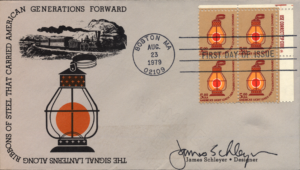 However, shown here is what may be one of the most valuable first day covers in my collection: A ZIP Block first day cover for the $5 Railroad Lantern in the Americana Series of 1975-81, on a cachet designed and signed by James Schleyer, who also designed the stamp. I purchased the envelope at a stamp store near the National Mall in Washington, DC, along with his cachets for many of the other stamps in the series that he designed. I also serviced ZIP block FDCs on his cachets for the other high values in the series.
However, shown here is what may be one of the most valuable first day covers in my collection: A ZIP Block first day cover for the $5 Railroad Lantern in the Americana Series of 1975-81, on a cachet designed and signed by James Schleyer, who also designed the stamp. I purchased the envelope at a stamp store near the National Mall in Washington, DC, along with his cachets for many of the other stamps in the series that he designed. I also serviced ZIP block FDCs on his cachets for the other high values in the series.
What’s it worth? Face value alone is $20. No one catalogues ZIP block FDCs, but I can’t imagine another FDC just like this one exists.
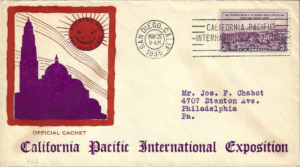 One of my collecting specialties is “official” cachets: A FDC produced by some person or entity with a connection to the stamp subject, often the force behind getting the stamp issued or the location where the first-day ceremony (launch ceremony) was held. I recently picked up this one from an American First Day Cover Society auction, although I may already have it: It was produced for the California-Pacific Exposition stamp (Sc. 773) by the exposition itself. The Planty/Mellone
One of my collecting specialties is “official” cachets: A FDC produced by some person or entity with a connection to the stamp subject, often the force behind getting the stamp issued or the location where the first-day ceremony (launch ceremony) was held. I recently picked up this one from an American First Day Cover Society auction, although I may already have it: It was produced for the California-Pacific Exposition stamp (Sc. 773) by the exposition itself. The Planty/Mellone 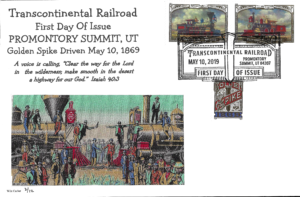 catalogues designate it as P11.
catalogues designate it as P11.
Also purchased in that AFDCS auction was this one, for the Transcontinental Railroad issue of 2019 (Sc. 5378-80), by Wile FDCs. The color picture is fabric.
I like train issues, although I’m hardly methodical enough to be called a 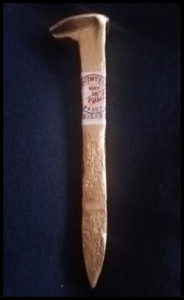 train topicalist. This one appealed to me, so I bought it.
train topicalist. This one appealed to me, so I bought it.
Another train first day cover (“cover” in a very broad sense) from the auction: An actual railroad spike, painted gold, with the Golden Spike (middle) stamp from 2019’s Transcontinental Railroad issue (Sc. 5379) and a circular date stamp. Cachetmaker Trevor Bills was the culprit!
And, no, it’s not my first three-dimensional FDC. Remember the FDC-in-a-bottle? Click here to read about that one.
Here’s another “official” cachet, for the 1964 Nevada Statehood centennial stamp (Sc. 1248). This also fits into my “oversized cover” specialty, because the envelope measures 9 inches by 12 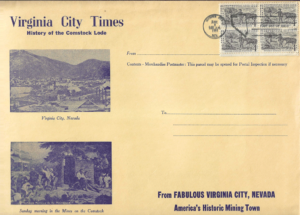 inches.
inches.
Inside was a faux newspaper, with an article on the stamp “below the fold.” (For the second picture, I copied the article to the top half of the picture, to show off the paper’s masthead at the same time.)
This is bigger than most of my FDCs, and bigger than my albums, so I’m 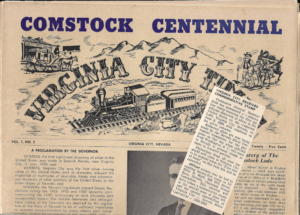 not sure where I’m going to put it.
not sure where I’m going to put it.
Finally, it’s covers like the one below that I also purchased in the AFDCS auction #91 that make it hard to characterize my collection with a short, simple phrase: I bought it because it make me laugh, and it wasn’t very expensive. It isn’t official, it isn’t oversize, and it isn’t a ZIP block. It’s not actually a first day cover, in fact. For those who don’t recognize him, that veteran collector and cachetmaker Rollin Berger, having himself a ball. I also love the postmark!
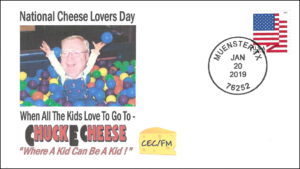 It came about because Rollin noted the “CEC” signature on many recent AFDCS FDCs, and asked (tongue in cheek) if that stood for “Chuck E. Cheese.” It actually is “Cuv Evanson Cachets,” one of the tradenames used by Pete McClure. “FM” is Foster Miller, the other jokester here.
It came about because Rollin noted the “CEC” signature on many recent AFDCS FDCs, and asked (tongue in cheek) if that stood for “Chuck E. Cheese.” It actually is “Cuv Evanson Cachets,” one of the tradenames used by Pete McClure. “FM” is Foster Miller, the other jokester here.
And I am proud to say that when my two sons were of that age, I never once went to a Chuck E. Cheese, even though there is one in the area. (I did, however, take them to a Chuck knockoff several times. And I bought them a subscription to Mad Magazine.)

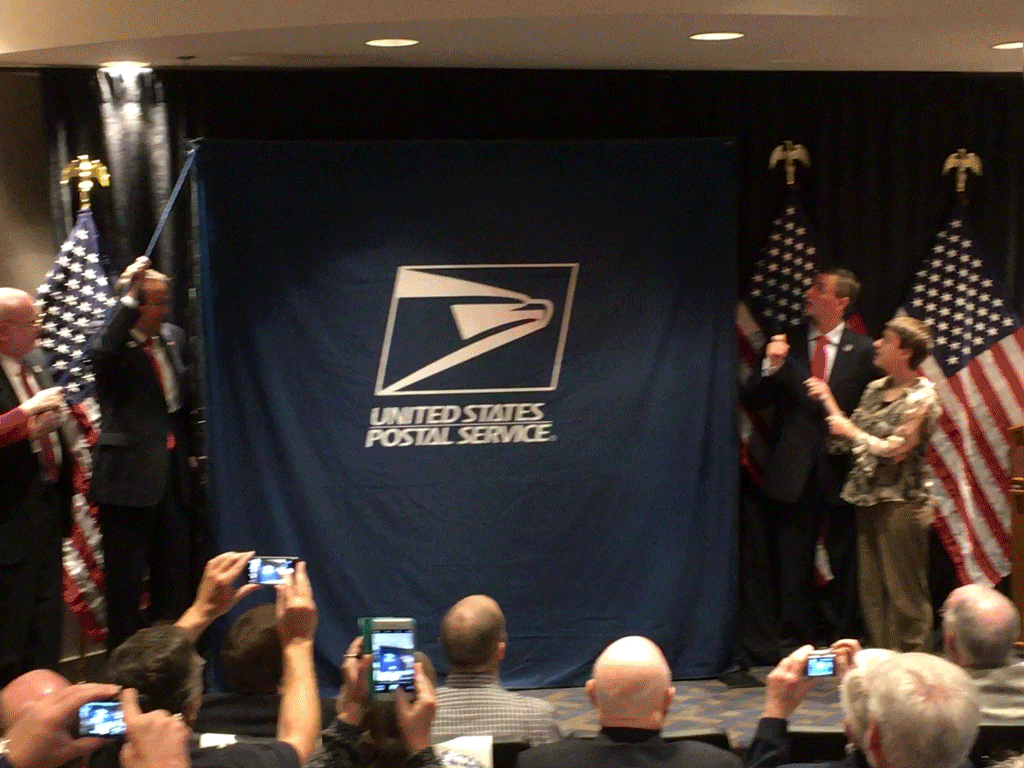 The listing of what happens at these events is the “program,” which is what we collect. However, we can do more than just accumulate these souvenirs. We can actually go to these events. (Shown above, the unveiling of the stamp design, launching the 2017 Flag stamp at Southeastern Stamp Expo near Atlanta.)
The listing of what happens at these events is the “program,” which is what we collect. However, we can do more than just accumulate these souvenirs. We can actually go to these events. (Shown above, the unveiling of the stamp design, launching the 2017 Flag stamp at Southeastern Stamp Expo near Atlanta.)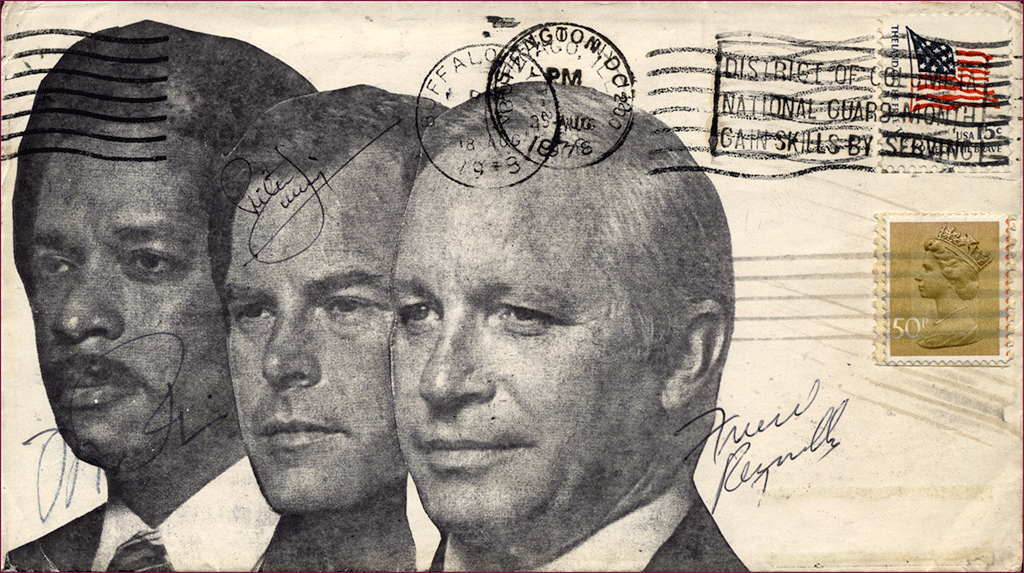 The description said “1976,” but upon closer examination, the postmark dates are 1978. When I brought it to work, coworkers pointed out that that was the year ABC’s evening television newscast was reformatted and named “World News Tonight,” which is its present name, in July 1978.
The description said “1976,” but upon closer examination, the postmark dates are 1978. When I brought it to work, coworkers pointed out that that was the year ABC’s evening television newscast was reformatted and named “World News Tonight,” which is its present name, in July 1978.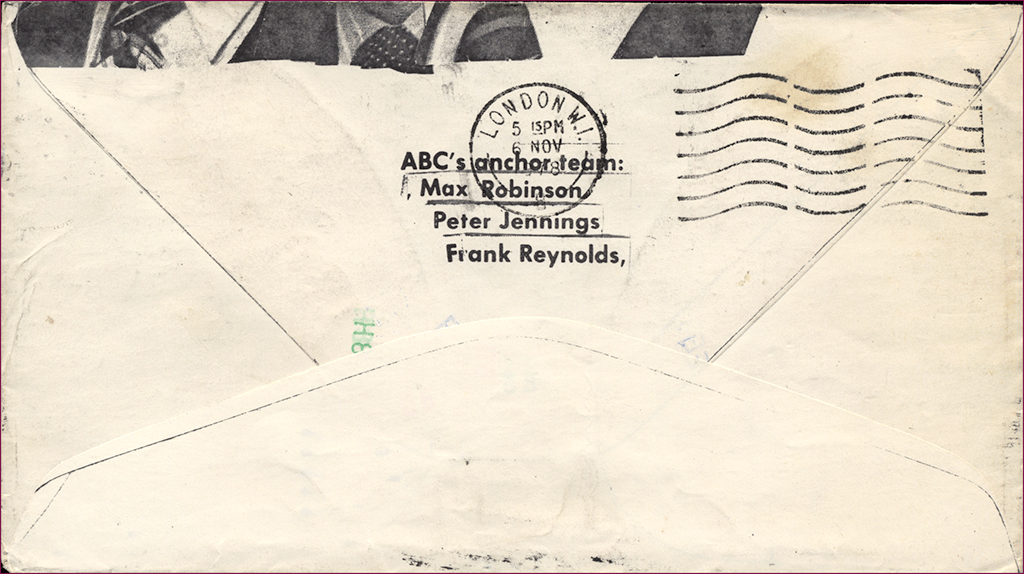 The (upside-down) reverse of the envelope has a London “backstamp” as well. There is no clue who produced the cover or whether more than one was produced.
The (upside-down) reverse of the envelope has a London “backstamp” as well. There is no clue who produced the cover or whether more than one was produced.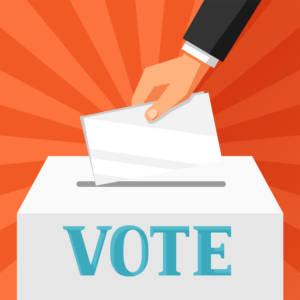 Ho, hum, another American Philatelic Society election. There’s only one candidate per office, so why bother?
Ho, hum, another American Philatelic Society election. There’s only one candidate per office, so why bother?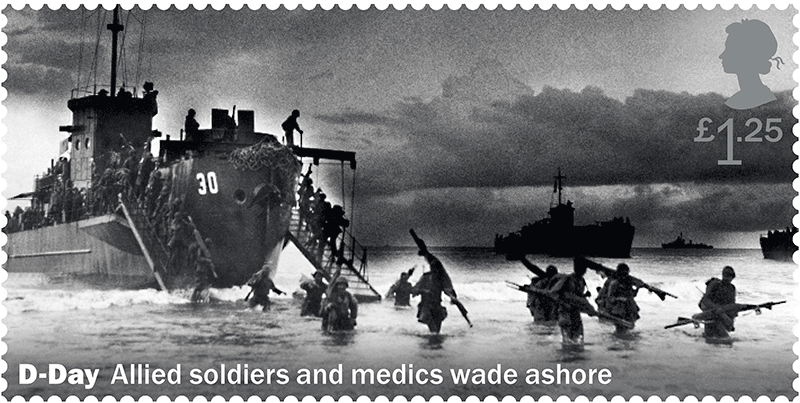 Royal Mail quickly sent out a correction, adding that the stamps had not yet been printed and, of course, this design won’t be printed.
Royal Mail quickly sent out a correction, adding that the stamps had not yet been printed and, of course, this design won’t be printed.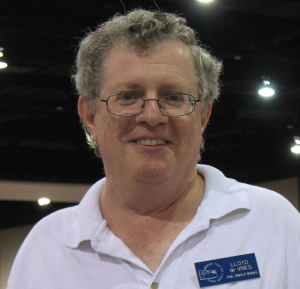 I’m often critical of the USPS, but this decision makes no sense to me. The justices say the agency made $2.1 billion from the sale of 4.9 billion stamps. That’s the gross, at 44 cents per stamp. The printing cost is a small fraction of the selling price, but a stamp represents a payment, whether it’s a tax on alcohol or playing cards, or, in the case of postage stamps, for delivering a piece of mail.
I’m often critical of the USPS, but this decision makes no sense to me. The justices say the agency made $2.1 billion from the sale of 4.9 billion stamps. That’s the gross, at 44 cents per stamp. The printing cost is a small fraction of the selling price, but a stamp represents a payment, whether it’s a tax on alcohol or playing cards, or, in the case of postage stamps, for delivering a piece of mail.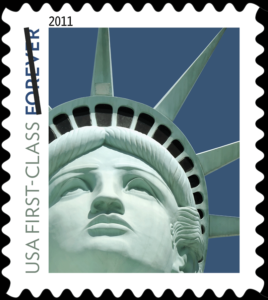 Most of us would be thrilled to see our work on a postage stamp, nationally distributed through more than 30,000 retail outlets and ending up in millions of homes and businesses.
Most of us would be thrilled to see our work on a postage stamp, nationally distributed through more than 30,000 retail outlets and ending up in millions of homes and businesses.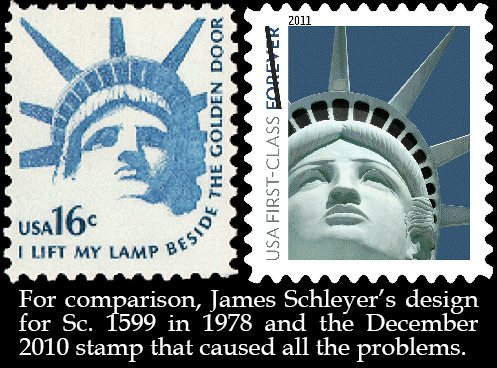 The mistake, as well as other incorrect stamp designs (the wrong African-American cowboy’s picture, putting the Grand Canyon in the wrong state, and, of course, the Korean War Veterans Memorial stamp), are affecting my part of stamp collecting: The USPS now triple-checks everything, runs it all past attorneys, then triple-checks everything again, and first day cover collectors and servicers are getting information about new issues later and later. “Even though George Washington had no children of his own, have we checked all the descendants of his stepdaughters to see if we have permission to use ‘Washington’ in a postmark?”
The mistake, as well as other incorrect stamp designs (the wrong African-American cowboy’s picture, putting the Grand Canyon in the wrong state, and, of course, the Korean War Veterans Memorial stamp), are affecting my part of stamp collecting: The USPS now triple-checks everything, runs it all past attorneys, then triple-checks everything again, and first day cover collectors and servicers are getting information about new issues later and later. “Even though George Washington had no children of his own, have we checked all the descendants of his stepdaughters to see if we have permission to use ‘Washington’ in a postmark?”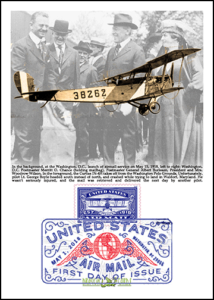 Good thing I didn’t print my
Good thing I didn’t print my 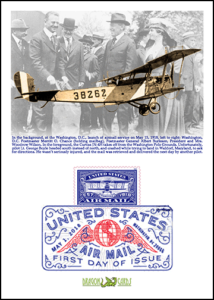 I re-edited the photo. Putting back the bystanders on the sides not only increased the width, it also decreased the height of the picture. The result (also a mock-up) is shown in Figure 2.
I re-edited the photo. Putting back the bystanders on the sides not only increased the width, it also decreased the height of the picture. The result (also a mock-up) is shown in Figure 2.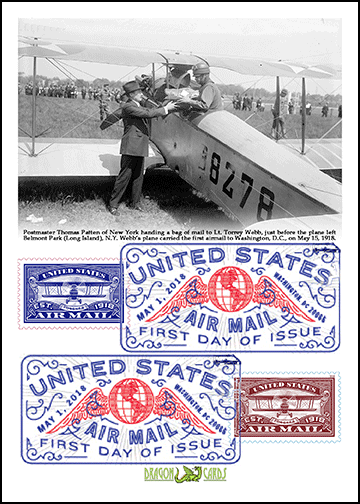 No, no, discretion is the better part of valor. I’ll use a different design for the dual-canceled Dragon Cards.
No, no, discretion is the better part of valor. I’ll use a different design for the dual-canceled Dragon Cards.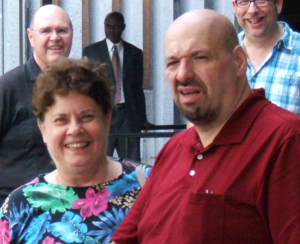 The following year, Mellone and Ripley called the AFDCS show “Americover.”
The following year, Mellone and Ripley called the AFDCS show “Americover.”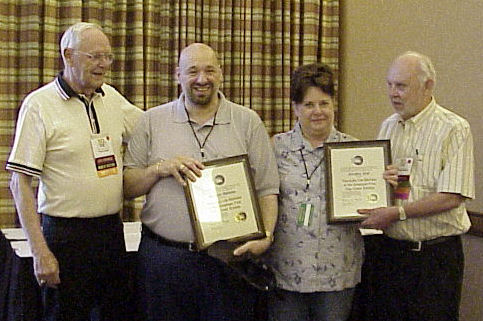
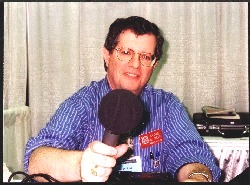 The pieces were always written for a mass audience, not stamp collectors, and rarely used philatelic jargon. In fact, they rarely used “philatelic” — making it hard to talk about the bigest stamp collecting organization in the U.S., the American PHILATELIC Society! It was kept to one minute, so that commercial radio stations would run it.
The pieces were always written for a mass audience, not stamp collectors, and rarely used philatelic jargon. In fact, they rarely used “philatelic” — making it hard to talk about the bigest stamp collecting organization in the U.S., the American PHILATELIC Society! It was kept to one minute, so that commercial radio stations would run it.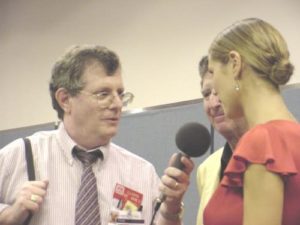
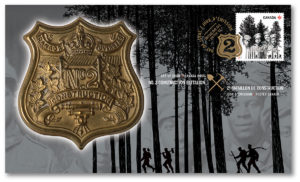 Although Canada Post produces its own cachets, such as the one shown on the right, it is possible for individuals to submit their own covers.
Although Canada Post produces its own cachets, such as the one shown on the right, it is possible for individuals to submit their own covers.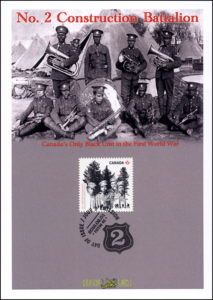 On the left is shown a Dragon Card produced by me for the same issue and submitted to Canada Post for servicing.
On the left is shown a Dragon Card produced by me for the same issue and submitted to Canada Post for servicing.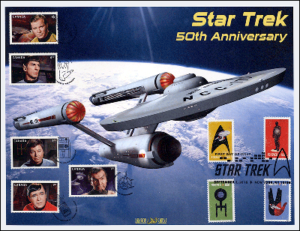 Canada Post will not cancel covers that “bear foreign postage or previous cancellations.” That means no combination FDCs with another country’s stamps, such as the 1999 U.S. Star Trek stamp (Sc. 3188e). Earlier Canadian stamps are acceptable for combos.
Canada Post will not cancel covers that “bear foreign postage or previous cancellations.” That means no combination FDCs with another country’s stamps, such as the 1999 U.S. Star Trek stamp (Sc. 3188e). Earlier Canadian stamps are acceptable for combos.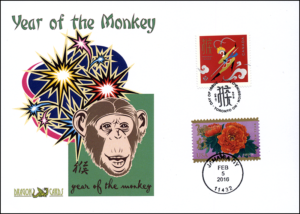 Canada strongly prefers that its stamps be in the traditional upper right corner, but is flexible.
Canada strongly prefers that its stamps be in the traditional upper right corner, but is flexible.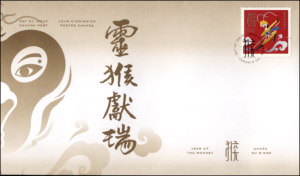 Post.
Post.

